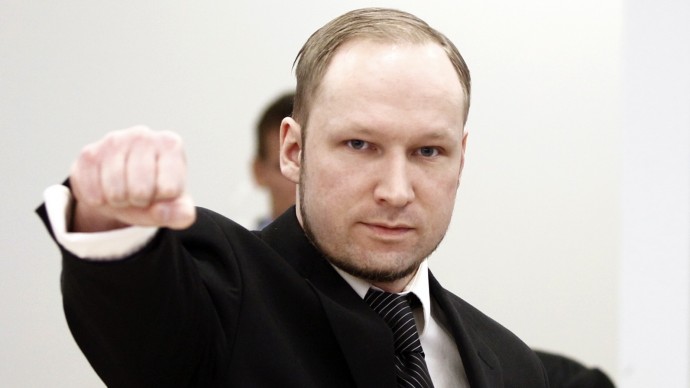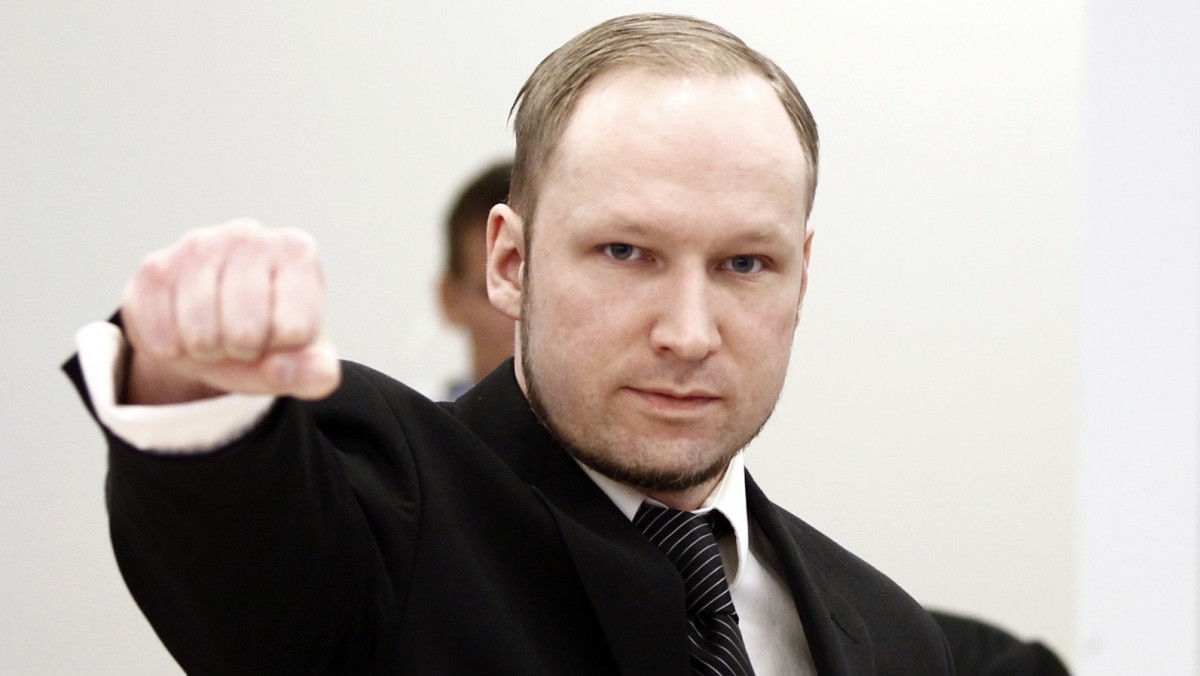
(MintPress)— Norwegian mass murderer Anders Behring Breivik is on trial this week in Oslo for slaying 77 people last summer.
While he’s been portrayed by the media and regarded by many as a man suffering from mental illness, some say his actions and the ideology that motivated them are a wake-up call for those wishing to prevent similarly themed tragedies.
The attack
He first detonated a car bomb near the Parliment building in Oslo in July, which killed 7 people and injured 200 more, then drove to the nearby wooded island of Utoya. He gunned down 69 people there, most of them teenagers, attending a summer youth camp organized by the governing Labor Party.
Thirty three-year-old Breivik has said that his victims were “not innocent,” because they supported multiculturalism. He has compared the camp to a Hitler Youth event. He said his actions were comparable to World War II commanders’ bombing of Hiroshima and Nagasaki to save millions of lives and Sitting Bull’s fight for Native Americans.
Breivik also stated that his actions were in protest to the Islamic “colonization” of Norway, however the vast majority of his victims were not Muslims.
Breivik has stated that he is a member of a group called the Knights Templar, which prosecutors have said does not exist. However, Breivik claims was formed in 2002 to “help unite all militant nationalists”. He also stated, “Knights Templar is a leaderless network, made to be self-driven cells,” he said. “For militants, (Knights Templar) is meant to be a version of al-Qaeda,” according to news reports of the trial.
Dangerous ideology
Breivik is expected to continue giving testimony through the week. His sanity has become the focus of the trial, with Breivik’s defense attorney, Geir Lippestad, stressing the importance of Breivik’s testimony in establishing that. Breivik has said he wishes to be considered sane, which he believes will allow his ideology to “stand stronger”.
Initially, prosecutors recommended that Breivik be sentenced to compulsory mental care after his first psychiatric report, which was released in November. It deemed him “paranoid schizophrenic” which would mean that he would avoid punishment for his actions under Norwegian law. However, a second forensic report issued last week concluded he was “not psychotic.”
Prosecutors will seek the maximum criminal sentence of 21 years, based on the report stating that he is indeed sane. Breivik’s attorney’s are in agreement, but say that while he was sane, he is not guilty because he acted in “self defense.”
The accused describes the killings as a preventive measure to protect indigenous Norwegians from a civil war that he believes will ensue from multiculturalists’ promotion of Muslim immigration to Europe.
Breivik has said he thought it was “ridiculous” that he could only be sentenced to 21 years. And he has offered praise for several suspects in other European right-wing extremist attacks, including Peter Mangs – who is suspected of numerous immigrant shootings in Sweden in 2010, and Germans Uwe Boehnhardt, Uwe Mundlos and Beate Zschaepe, suspected of killing eight people of Turkish origin, a Greek man and a policewoman in Germany between 2000 and 2007.
Breivik not just a “nut with a gun”
Oxford University historian Timothy Stanley has written on the case and said that it’s dangerous for the international public to dismiss Breivik as just a “nut with a gun”, as Stanley believes “there’s no denying the political context to what Breivik did. Since 9/11, fringe and mainstream politicians in Europe and America have spoken of Islam as incompatible with Western values.”
Before undertaking the violent rampage, Breivik wrote a 1,500 page manifesto entitled “2083: A European Declaration of Independence,” in which he demands “the ideology of multiculturalism” be “immediately removed from all government policies and school curricula.” He also states that “all Muslim immigration in whatever form” should be “immediately and completely halted.”
He wrote the manifesto in English, and published it under the pseudonym Andrew Berwick.
The sentiments Breivik eschews echo a growing strain of anti-Muslim dialogue in public discourse, especially as spouted right-wing extremist groups in America and abroad. “Breivik quoted many of them in his manifesto. This is not to say that he took direct inspiration from those public figures, or that they bear personal responsibility for his crimes. But Breivik’s paranoia does conform to a popular — wholly negative — view of the twin problems of Islam and multiculturalism. Tragically, it is a view that few mainstream politicians have been willing to challenge,” Stanley said.
Stanley points out that Breivik’s erroneous idea that Islam is somehow inferior to Christianity and that it cannot exist peacefully within a secular democracy echoes sentiments heard in the Dutch Party for Freedom, the French National Front, the English Defense League and the Finnish True Finns.
American connection
But Europe isn’t the only place one need look to find such sentiments. Consider American Republican presidential candidate Herman Cain’s Islamophobic comments last June that the building of an Islamic Center in Murfreesboro, Tenn. were “ an infringement and an abuse of our freedom of religion” and “just another way to try to gradually sneak Shariah law into our laws, and I absolutely object to that.”.
Another example Stanley references is U.S. Rep. Peter King’s congressional hearings last year which examined, as the title of the hearings proclaims, “The Extent of Radicalization in the American Muslim Community and That Community’s Response.”
King said at the time that there are “too many mosques” in the United States and that roughly 80 percent of American Muslims are radical during the hearings.
Akbar Ahmed, Chair of Islamic Studies at American University in Washington DC warned that the hearings could function to fan the flames of growing suspicions aimed at Muslims. “We were blind to it. And now that it’s surfaced, and it’s out there, I think we’re at a very dangerous moment in American history,” he told the Washington Post. “It’s like a boil, and it needs to be pricked.”
Writer and columnist Christina Patterson has penned that Breivik holds “ a view of the world that divides it into good and evil,” and this is an ideology unfortunately shared by many people and nations in the world today.
“They like things to be simple,” Patterson says of Breivik and those sharing his ideas, “They want to live in homogeneous cultures where one view, which happens to be their own, prevails. When cultures change, as they all will with globalization, they stamp their feet, and want to bend the world to their will. They can’t bear their own feelings of failure, and want to feel strong,” Patterson writes.
Tragically this worldview extends beyond individuals and to nations as well Patterson said.
“Countries do this, too. They think evil is something you can vanquish by throwing bombs and waving guns. They sometimes even think that the best way to respond to a mass murder is to start a war.”


